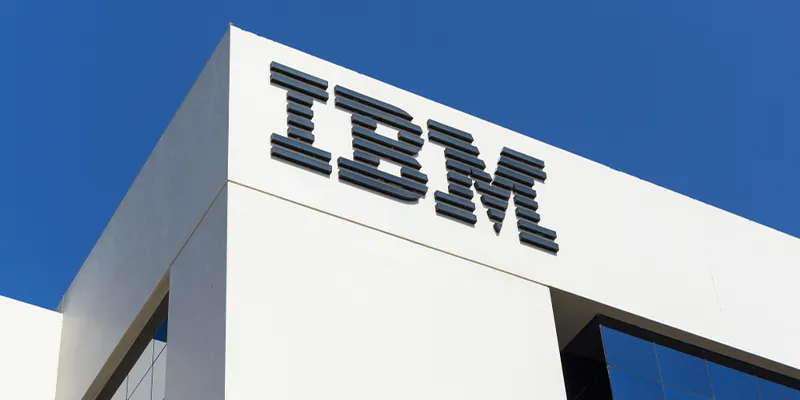IBM closes landmark acquisition of Red Hat for $34B, defines open, hybrid cloud future
The acquisition of Red Hat positions IBM as the leading hybrid cloud provider, accelerates its high-value business model, and extends open source innovation to a broader range of clients. Together, the two companies aim to deliver a next-generation hybrid, multicloud platform.

IBM and Red Hat announced that they have closed a transaction under which IBM acquired all of the issued and outstanding common shares of Red Hat for $190 per share in cash, representing a total equity value of approximately $34 billion.
The acquisition redefines the cloud market for business. Red Hat's open hybrid cloud technologies are now paired with the scale and depth of IBM's innovation and industry expertise, and sales leadership in more than 175 countries.
Together, IBM and Red Hat will accelerate innovation by offering a next-generation hybrid, multicloud platform. Based on open source technologies, such as Linux and Kubernetes, the platform will allow businesses to securely deploy, run, and manage data and applications on-premise and on private and multiple public clouds.
"Businesses are starting the next chapter of their digital reinventions, modernising infrastructure and moving mission-critical workloads across private clouds and multiple clouds from multiple vendors," said Ginni Rometty, IBM Chairman, President, and CEO.

IBM CEO Ginni Rometty says the two companies together will help clients forge the technology foundations of their business for decades to come. (Image: Shutterstock)
“They need open, flexible technology to manage these hybrid multicloud environments. And they need partners they can trust to manage and secure these systems. IBM and Red Hat are uniquely suited to meet these needs. As the leading hybrid cloud provider, we will help clients forge the technology foundations of their business for decades to come."
Jim Whitehurst, President and CEO, Red Hat, said, “When we talk to customers, their challenges are clear: They need to move faster and differentiate through technology. They want to build more collaborative cultures, and they need solutions that give them the flexibility to build and deploy any app or workload, anywhere.”
“We think open source has become the de facto standard in technology because it enables these solutions. Joining forces with IBM gives Red Hat the opportunity to bring more open source innovation to an even broader range of organisations, and will enable us to scale to meet the need for hybrid cloud solutions that deliver true choice and agility.”
Helping businesses transition to the cloud
Red Hat will continue to be led by Jim Whitehurst and its current management team. Whitehurst is joining IBM's senior management team, reporting to Ginni Rometty. IBM will maintain Red Hat's headquarters in Raleigh, North Carolina, its facilities, brands and practices. Red Hat will operate as a distinct unit within IBM and will be reported as part of IBM's Cloud and Cognitive Software segment.
Both companies have already built leading enterprise cloud businesses with consistent strong revenue growth by helping customers transition their business models to the cloud.
IBM's cloud revenue has grown from four percent of total revenue in 2013 to 25 percent today. This growth comes through a comprehensive range of as-a-service offerings and software, services and hardware that enable IBM to advise, build, move and manage cloud solutions across public, private and on-premises environments for customers.
IBM cloud revenue for the 12-month period through the first quarter of this year grew to over $19 billion. The Red Hat acquisition is expected to contribute approximately two points of compound annual revenue growth to IBM over a five-year period.
Red Hat's fiscal year 2019 revenue was $3.4 billion, up 15 percent year over year. Fiscal first quarter 2020 revenue, reported in June, was $934 million, up 15 percent year over year. In that quarter, subscription revenue was up 15 percent year over year, including revenue from application development-related and other emerging technology offerings up 24 percent year over year. Services revenue also grew 17 percent.
The hybrid cloud opportunity
Digital reinvention is at an inflection point as businesses enter the next chapter of their cloud journey. Most enterprises today are approximately 20 percent into their transition to the cloud. In the first chapter of their cloud journey, businesses made great strides in reducing costs, boosting productivity and revitalising their customer-facing innovation programmes. Chapter two, however, is about shifting mission-critical workloads to the cloud and optimising everything, from supply chains to core banking systems.
To succeed in the next chapter of the cloud, businesses need to manage their entire IT infrastructure, on and off-premises and across different clouds – private and public, in a way that is simple, consistent, and integrated. Businesses are seeking one common environment they can build once and deploy in any one of the appropriate footprints to be faster and more agile.
IBM's offerings have evolved to reflect new customer needs and drive greater growth. The acquisition of Red Hat further strengthens IBM as the leader in hybrid cloud for the enterprise.
"As organisations seek to increase their pace of innovation to stay competitive, they are looking to open source and a distributed cloud environment to enable a new wave of digital innovation that wasn't possible before. Over the next five years, IDC expects enterprises to invest heavily in their journeys to the cloud, and innovation on it. A large and increasing portion of this investment will be on open hybrid and multicloud environments that enable them to move apps, data, and workloads across different environments," said Frank Gens, Senior Vice President and Chief Analyst, IDC.
The collective ability of IBM and Red Hat to unlock the true value of hybrid cloud for businesses is already resonating among customers moving to the next chapter of digital reinvention.
"As a long-standing partner of Red Hat and IBM, we look forward to capabilities that these two companies will bring together," said Michael Poser, Managing Director and Chief Information Officer, Enterprise Technology and Services, Morgan Stanley. "We know first-hand how important and impactful cloud technology contributes to unlocking business value."
IBM reinforces open source commitment
IBM and Red Hat have deep open source values and experience. The two companies have worked together for more than 20 years to make open source the default choice for modern IT solutions. This includes the importance of open governance, and helping open source projects and communities flourish through continued contribution.

IBM has, with this acquisition, committed to preserving the independence and neutrality of Red Hat's open source heritage.
(Image: Shutterstock)
With Red Hat, IBM has acquired one of the most important software companies in the IT industry. Red Hat's pioneering business model helped bring open source – including technologies like Linux, Kubernetes, Ansible, Java, Ceph, and many more – into the mainstream for enterprises. Today, Linux is the most used platform for development.
Red Hat Enterprise Linux alone is expected to contribute to more than $10 trillion worth of global business revenues in 2019. By 2023, an additional 640,000 people are expected to work in Red Hat-related jobs.
IBM has committed to scaling and accelerating open source and hybrid cloud for businesses across industries, as well as preserving the independence and neutrality of Red Hat's open source heritage. This includes its open source community leadership, contributions, and development model; product portfolio, services, and go-to-market strategy; robust developer and partner ecosystems; and unique culture.
(Edited by Teja Lele Desai)












